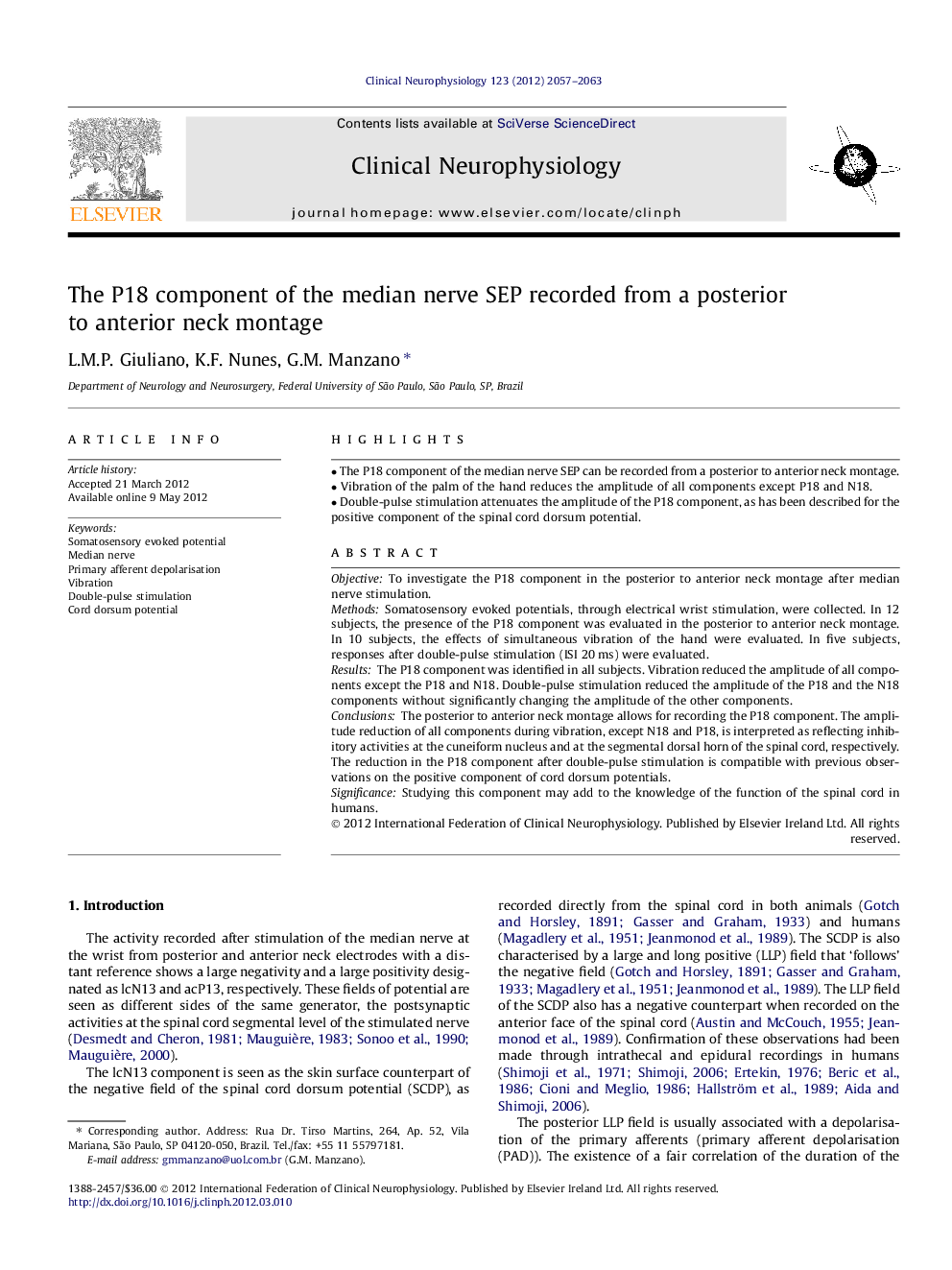| Article ID | Journal | Published Year | Pages | File Type |
|---|---|---|---|---|
| 3045390 | Clinical Neurophysiology | 2012 | 7 Pages |
ObjectiveTo investigate the P18 component in the posterior to anterior neck montage after median nerve stimulation.MethodsSomatosensory evoked potentials, through electrical wrist stimulation, were collected. In 12 subjects, the presence of the P18 component was evaluated in the posterior to anterior neck montage. In 10 subjects, the effects of simultaneous vibration of the hand were evaluated. In five subjects, responses after double-pulse stimulation (ISI 20 ms) were evaluated.ResultsThe P18 component was identified in all subjects. Vibration reduced the amplitude of all components except the P18 and N18. Double-pulse stimulation reduced the amplitude of the P18 and the N18 components without significantly changing the amplitude of the other components.ConclusionsThe posterior to anterior neck montage allows for recording the P18 component. The amplitude reduction of all components during vibration, except N18 and P18, is interpreted as reflecting inhibitory activities at the cuneiform nucleus and at the segmental dorsal horn of the spinal cord, respectively. The reduction in the P18 component after double-pulse stimulation is compatible with previous observations on the positive component of cord dorsum potentials.SignificanceStudying this component may add to the knowledge of the function of the spinal cord in humans.
► The P18 component of the median nerve SEP can be recorded from a posterior to anterior neck montage. ► Vibration of the palm of the hand reduces the amplitude of all components except P18 and N18. ► Double-pulse stimulation attenuates the amplitude of the P18 component, as has been described for the positive component of the spinal cord dorsum potential.
